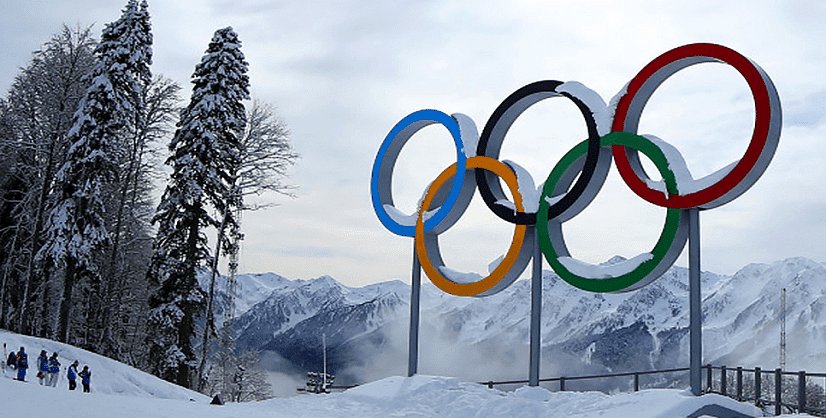The 2022 Beijing Winter Olympics has been one of the most action-packed and competitive in recent years.
Having around 3,000 athletes from 91 nations competing in 109 events across 15 disciplines, there’s been a lot to keep up with. According to reports, an average of 11.4 million viewers watched the ceremony. At the same time, the Olympic’s social media channels have reached 2.5 billion engagements. This figure proves that the global event is something that no one is likely to miss.
With that in mind, many have been wondering how this sports event became like it is today. So, whether you’re a die-hard fan or just getting into it, here’s everything you need to know about the Winter Olympics.
Who started the Winter Olympics and why?
It is the International Olympic Committee (IOC) that is responsible for the organization of the Olympic Games. They work to ensure the event’s success and protect the Olympics’ values and integrity. At the time, the IOC was headed by President Pierre de Coubertin.

In 1924, the committee decided to give its patronage to a Winter Sports Week. The event was held in Chamonix, France, and it was a great success that attracted 10,004 spectators.

It inspired the IOC to make the Winter Olympics an official sporting event. From then on, it has been held every four years, alongside the Summer Olympics.
What is the purpose of the Winter Olympics?
Like other Olympic games, the winter Olympics were designed to promote world peace and understanding through the power of sport.
The games also aim to inspire people of all ages to get active and encourage better health through winter sports.
As winter sports are often niche and not widely available, the Olympics offer a rare chance for people to see these athletes in action and be amazed by their skills.
It also helps showcase every winter sports destination globally and the athletes’ home countries. This strategy encourages tourism, inviting people to visit these places and learn more about the culture and landscape.
Why did the Olympics split into summer and winter?
Before, the two sports events were held simultaneously every four years. The Summer Olympics was the first event, having begun in 1896. The Winter Olympics followed much later in 1924.
However, the Winter Olympics wasn’t as popular as the Summer Olympics, which led to splitting them up.
The separation of the games in 1992 allowed the Winter Olympics to shine from the shadows of the Summer Olympics. As a result, the Winter Olympics is one of the most-watched global sporting events today.
How many athletes compete in the Winter Olympics?
The first winter Olympics had just 250 athletes from 16 countries competing in 16 events. This figure has grown exponentially over the years as in the recent 2022 Beijing Winter Olympics, 2,871 individual athletes participated.
Among these is the United States, with 224 athletes, having the largest delegation for the season. Canada follows this figure with 217 athletes and Russia with 215 athletes.
Each sporting event has a different number of athletes allowed to compete. It usually depends on the sport’s popularity and how many athletes can safely compete.
How many sports are in the Winter Olympics?
There were originally only six sports in the first winter Olympics. These sports were further subdivided into 14 different events. These included bobsled, ski jump, ice hockey, curling, skating, and skiing.

But in today’s modern Winter Olympics, there are 15 different sports disciplines. These are categorized under three main areas: Ice sports, Alpine, skiing and snowboarding, and Nordic events.
What sports are in the Winter Olympics?
The recent Winter Olympic sports list includes the following sports:
Bobsledding
It is one of the oldest winter sports, making its debut in the first-ever Winter Olympics. Bobsledding involves teams of two or four athletes racing down an icy track in a sled. It is thrilling to watch, and the athletes need a combination of strength, power, and agility to do well.
Luge
A luge is a small sled that one or two people lie on and race down an icy track. It is similar to bobsledding but with only one or two athletes. It requires a lot of precision and focus, as even the slightest mistake can lead to a crash.
Skeleton
This sledding event is similar to luge but has one crucial difference – the athletes race head-first down the track. It is typically held on the same track as the bobsledding event.
Ice Hockey
Ice hockey is a team sport that is popular in many countries. It involves two teams of six players skating on the ice and trying to score goals with a puck. The game is fast-paced and often physical, with players using their bodies to block opponents and defend the goal.
Figure Skating
It is a beautiful individual or pair event. Athletes skate on the ice and perform a choreographed routine set to music. They are judged on their skating skills, jumps, spins, and footwork. It is a popular sport to watch, combining artistry and athleticism.
Speed Skating
Speed skating is what it sounds like – athletes racing each other on the ice. They compete in short, medium, and long-distance races. It is a popular sport in many countries, especially those with a lot of snow and ice.
Short-track Speed Skating
This event is similar to speed skating but with one key difference. The athletes race on a smaller, oval-shaped track. It is a fast and exciting sport to watch, with athletes reaching speeds of up to 40 kilometers per hour.
Curling
Another ice sport, curling, is often called “chess on ice.” It is a team sport, with each team having four players. The objective is to slide heavy granite stones across the ice and into a target area. It is a tactical sport that requires a lot of precision and strategy.
Alpine Skiing
Alpine skiing is a popular winter sport that involves racing down a slope. Athletes can compete in slalom, giant slalom, and super-G events. It is a fast and exciting sport to watch, with athletes reaching speeds of up to 130 kilometers per hour.
Freestyle Skiing
This skiing event takes place on moguls, small bumps on the ski slope. Athletes must navigate the slope, performing jumps and tricks along the way. It is a fast-paced and exciting sport to watch.
Snowboarding
This popular winter sport involves riding down a snow-covered slope on a special board. There are several different disciplines, including slopestyle, halfpipe, and giant slalom. It is a relatively new sport but has quickly gained popularity.
Cross-Country Skiing
A Nordic winter sport involves skiing over a long distance, typically around 10 kilometers. It is a popular sport in many countries, especially those with a lot of snow and ice.
Nordic Combined
This winter sport is a combination of cross-country skiing and ski jumping. Athletes compete in both disciplines, combining the results to give an overall winner. It is a popular sport in many countries, especially those with a lot of snow and ice.
Ski Jumping
One of the most popular winter sports, ski jumping involves athletes jumping down a slope on skis. They are judged on the length and style of their jump. It is a popular sport to watch, especially at the Olympics.
Biathlon
A winter sport that combines cross-country skiing with rifle shooting. Athletes must ski around a track and stop at certain points to shoot targets. It is a popular sport in many countries, especially those with a lot of snow and ice.
The Winter Olympics is a time-honored tradition. Over the years, the event has evolved and grown, with new sports added to the roster. These days, there is something for everyone at the Winter Olympics. So whether you’re a fan of fast-paced action or elegant artistry, there’s sure to be a Winter Olympic sport that will appeal to you.

